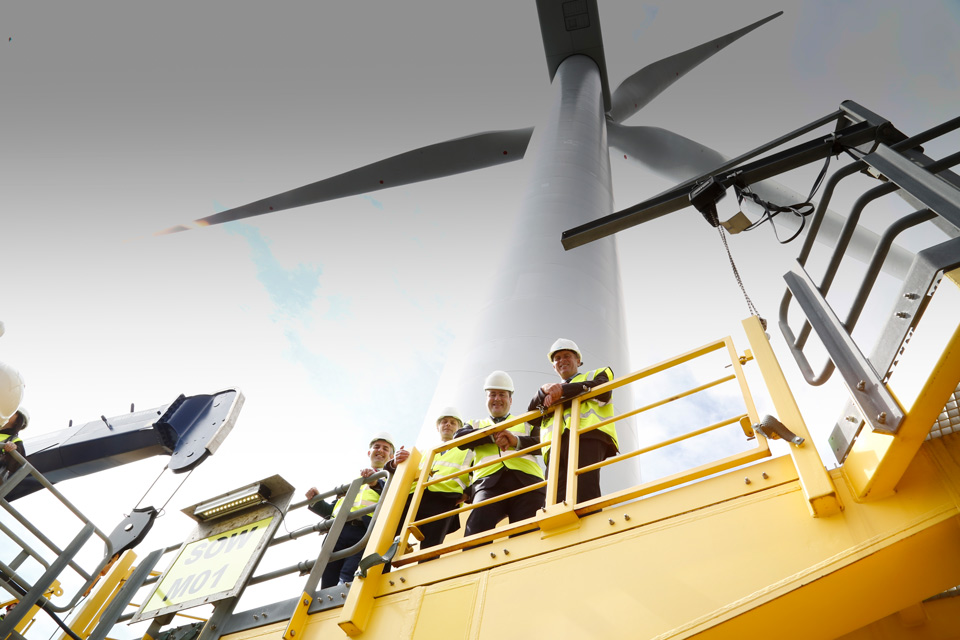
Image source: Scottish Government, Flickr, CC-2.0
There are many different technologies that are being used to help combat climate change and support a sustainable world within key sectors such as energy, transport, construction, industry and buildings management. The implementation of these technologies will support Australia’s clean and green economy and our 2050 target of net zero emissions. Net zero emissions entails cutting our greenhouse gas emissions to as close to zero as possible. Carbon dioxide is the primary greenhouse gas emitted from human activities.
The largest source of emissions in the world is the energy sector. Within the energy sector in Australia, many clean
and green technologies are already in use.
Renewable energy
Select the arrows to move through the slides.
The other primary industries that contribute to carbon emissions are:
- agriculture
- transport
- construction
Each of these industries are taking measures to implement approaches to reduce and mitigate their carbon emissions.
Some approaches take significant investment and are considered a long-term approach. Others are simpler to implement
and will provide both short and long-term investment opportunities like the example below.
Agriculture
 Watch the video
Watch the video
Watch ‘How solar saved this sheep farmer’ to learn more about how solar farms are changing Australia's farming practices.
Transportation
The transportation sector is our second biggest source of emissions, so a move to clean and green transport is necessary if we are to meet our net zero emission goals. The primary way this is being done is by electrification of vehicles, such as electric cars and buses. Electric cars work through one or more electric motors, using energy stored in rechargeable batteries. Unlike conventional vehicles that run on petrol or diesel, electric cars produce no tailpipe emissions and reduce our reliance on fossil fuels. Electric vehicles operate through rechargeable batteries, but even when charging through a grid powered by fossil fuels, they have a lower carbon footprint than combustion engine vehicles as they are highly energy efficient.
 Watch the video
Watch the video
Watch ‘Our Dirty Transport System, and how to make it better’ to learn more about how we can clean up our transport system and enjoy the benefits this will have to our health, environment and ‘hip pockets’.
 Apply your skills
Apply your skills
Document your thoughts to each of the questions presented. When you have finished, select Create document to export your content and keep for later.
Sustainable homes
It is not just the energy and transport industries that are making the move towards sustainable, clean and green technologies. Read the case study below to see how these technologies can be used in the home, such as the utilisation of the Future Food System.
 Take a closer look
Take a closer look
Take a closer look at the futurefoodsystem about page and scroll down to explore their graphic HOW IT WORKS.
 Consider this
Consider this
Greenhouse by Joost is an entirely self-sustaining home that was designed in Melbourne. Joost Bakker, a sustainability and zero-waste pioneer, created this self-sustaining home as an ecosystem that provides shelter, produces food and generates energy. Some of the technologies in use include a kitchen powered by methane gas, converted from organic waste using a biodigester. Flooring is concrete, but was made by crushed recycled wine bottles, and is also recyclable itself. Solar panels provide electricity through a nickel-iron battery wall. The compressed straw walls were built by Durra Panel, who create fully certified walls that are fire resistant, soundproof, durable and sustainable. It also contains a large-scale mushroom wall, which uses steam from the shower to thrive. This wall then creates carbon dioxide, which is then fed back into the atrium. The home also contains a terrace garden, with over 200 species of plants. This garden, alongside an aquaponics system and beehive, can provide all of the resources needed to the inhabitants of the home.
Visit futurefoodsystem to take a 360degree tour of the home and consider the following:
- What does the interior of the home look like, compared to homes made with traditional materials?
- What long-term benefits could be achieved if we normalised the use of these building materials?
Background Colour
Font Face
Font Kerning
Font Size
Image Visibility
Letter Spacing
Line Height
Link Highlight
Text Colour